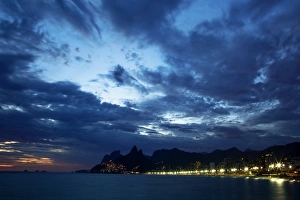Tupi Collection
"Tupi: A Glimpse into the Captivating Brazilian Village" Step back in time to the enchanting world of Tupi
All Professionally Made to Order for Quick Shipping
"Tupi: A Glimpse into the Captivating Brazilian Village" Step back in time to the enchanting world of Tupi, a picturesque Brazilian village depicted in stunning artworks from the 17th century. With each stroke of oil on panel or canvas, renowned artists like Frans Post transport us to this captivating era. One such masterpiece is "Landscape on the Rio Senhor de Engenho, Brazil, " painted between 1670-80. The artwork immerses us in the lush beauty of Brazil's natural wonders, with its vibrant foliage and winding river that whispers tales of exploration and discovery. Another gem is "View of the Island of Itamaraca, Brazil" from 1637. This oil painting on canvas showcases an idyllic island paradise where golden sands meet azure waters. It invites us to imagine strolling along its shores and feeling the warm tropical breeze against our skin. In "Brazilian Landscape with a House under Construction, " created around 1655-60, we witness progress taking shape amidst nature's splendor. The artist captures both man-made structures and untamed wilderness harmoniously coexisting—a testament to human resilience within this wild frontier. The church holds great significance in any community, as seen in "Church Building in Brazil" (1675-80). This oil painting on panel portrays a place for spiritual solace amidst vast landscapes—an architectural marvel standing tall against nature's grandeur. "Landscape in Brazil" (1652) offers an immersive experience through its large-scale depiction of rolling hills and dense forests teeming with life. Its intricate details invite viewers to explore every nook and cranny—perhaps stumbling upon hidden treasures or encountering exotic creatures along their journey. These remarkable works also shed light on historical events such as the "Attack of a Fortified Village. " Through artistry alone, we can sense tension rising as indigenous tribes fiercely defend their land against foreign invaders, showcasing the resilience and bravery Indians.











